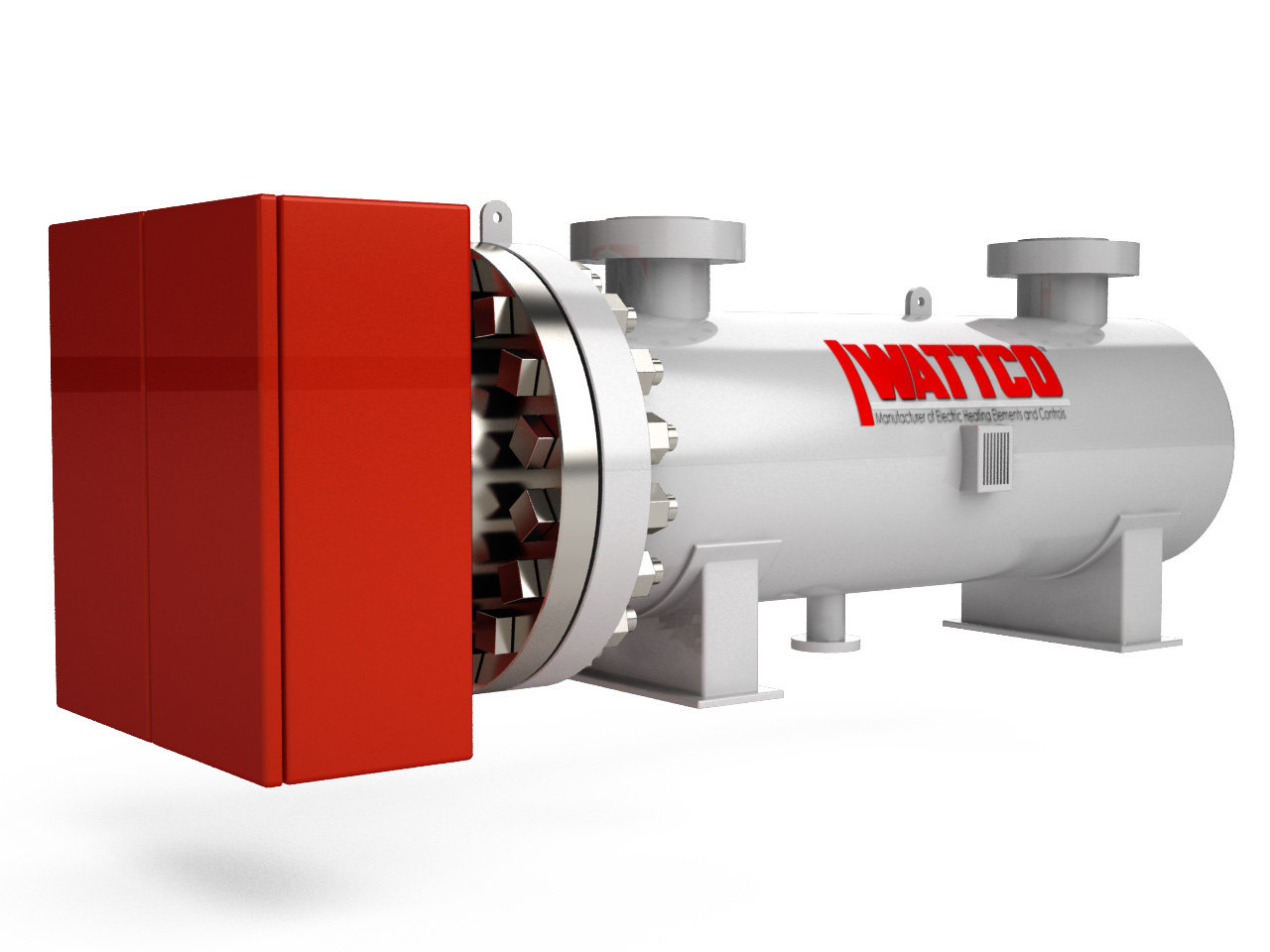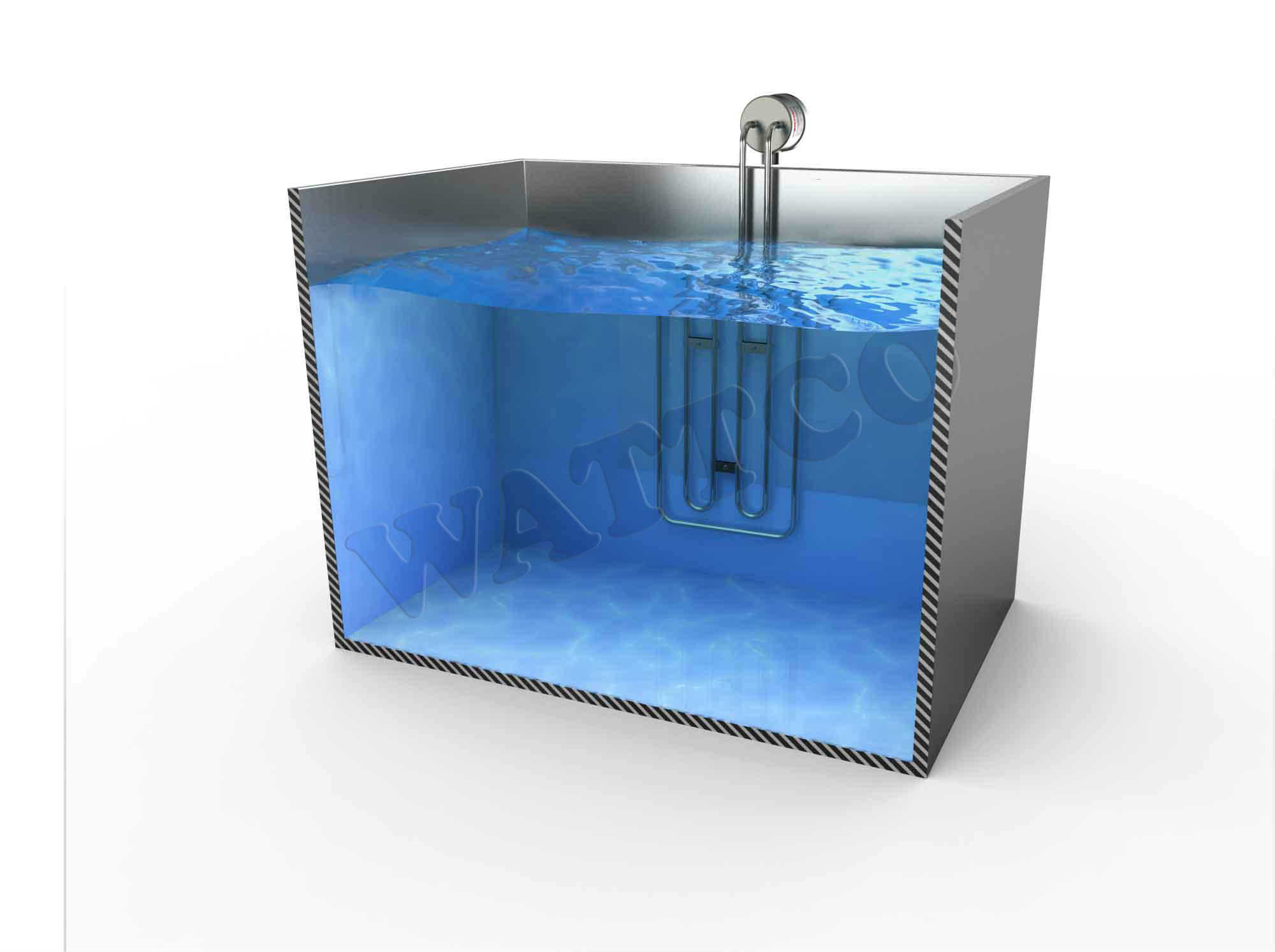Electric Industrial Heaters
Electric heating in simple terms refers to the process by which electric current converts into heat. This is based on the Joule heating principle, also known as “ohmic heating”, where heat is released when an electric current is passed through a conductor.[1]
This form of heating has found several uses, such as lighting incandescent light bulbs, burning electric stoves, and soldiering irons. Our focus in this article lies in the use of electric heaters in the petrochemical industry.
This form of heating has found several uses, such as lighting incandescent light bulbs, burning electric stoves, and soldiering irons. Our focus in this article lies in the use of electric heaters in the petrochemical industry.
Electric Heater Types
Flanged Heaters:
Flanged electric heaters are made of hairpin bent tubular[2] elements welded or brazed into a flange. Electric connections are provided to these elements via wiring boxes. These heaters are mostly used for heating water, oil, corrosive solutions, and heat transfer fluids. They utilize standard pipe flanges ranging from 3-14 inches to support high tank pressure in liquids and are installed through a matching companion flange to the tank wall. Because flange electric heaters are available in a variety of sizes, kilowatt ratings, voltages, terminal housings, and sheath materials, they are well suited for both domestic and industrial heating applications.

Immersion Heaters:
These heaters are made by encasing a nichrome resistance heating wire in a ceramic jacket. An Inconel sheath (a form of stainless steel that is highly corrosion and heat resistance) envelopes the jacket. As electricity flows through the nichrome wire, it starts heating, eventually beginning to glow and then releasing heat first through the ceramic and then the sheath until the temperature becomes extremely high. Since it is immersed in water, the water starts to heat once the sheath gets hot. A convection current will build up as water beneath the heating element passes through it and rises to the top of the vessel. As the hot layer makes its way to the top, it curves around and heads down along the opposite side of the vessel, which it crosses to once again rise below the vessel. As time passes, convection currents make the heat spread evenly throughout the vessel.
Flanged electric heaters are made of hairpin bent tubular[2] elements welded or brazed into a flange. Electric connections are provided to these elements via wiring boxes. These heaters are mostly used for heating water, oil, corrosive solutions, and heat transfer fluids. They utilize standard pipe flanges ranging from 3-14 inches to support high tank pressure in liquids and are installed through a matching companion flange to the tank wall. Because flange electric heaters are available in a variety of sizes, kilowatt ratings, voltages, terminal housings, and sheath materials, they are well suited for both domestic and industrial heating applications.

Immersion Heaters:
These heaters are made by encasing a nichrome resistance heating wire in a ceramic jacket. An Inconel sheath (a form of stainless steel that is highly corrosion and heat resistance) envelopes the jacket. As electricity flows through the nichrome wire, it starts heating, eventually beginning to glow and then releasing heat first through the ceramic and then the sheath until the temperature becomes extremely high. Since it is immersed in water, the water starts to heat once the sheath gets hot. A convection current will build up as water beneath the heating element passes through it and rises to the top of the vessel. As the hot layer makes its way to the top, it curves around and heads down along the opposite side of the vessel, which it crosses to once again rise below the vessel. As time passes, convection currents make the heat spread evenly throughout the vessel.
Electric Heater Applications
Common applications of steel flanged immersion heaters include heating low flow gas heating, oils, mild corrosive liquids, and waxes, as well as process water, soap, detergent solutions, and demineralized water. Electric heaters are also used in industries with piping systems to provide freeze protection and process maintenance. A major factor that makes electric heaters so viable in petrochemical industries is that they eliminate the need for direct-heating, all the while providing greater efficiency in comparison to standard forms of heating.
Similarly, immersion heaters are ideal for working with oils, gases, viscous, molten materials, and process solutions. These heaters also come in a wide selection of sizes, sheath materials, terminations connections, kilowatt ratings, and voltages.
Similarly, immersion heaters are ideal for working with oils, gases, viscous, molten materials, and process solutions. These heaters also come in a wide selection of sizes, sheath materials, terminations connections, kilowatt ratings, and voltages.
Electric Heater Benefits
General benefits of electric heaters include, firstly, flexibility and versatility. This is because using electric heating system eliminates the need of flues and pipes. This also means that electric heaters can be used in almost any industry regardless of the construction.
Electric heaters also offer low cost installation as setting up these machines is not so complicated. As mentioned above, no piping is required, so you just need to have a connection to an electric circuit. This particularly helps during re-wiring and refurbishing.
Most importantly, electric heaters are safe and reliable. As stated before, no internal burning is required in this heating system, which eliminates the risks such as explosions and carbon monoxide poisoning. Moreover, since there are no radiators, problems of leakage or bursting will not only be avoided, but there will also be less risk of damage to properties. All these factors also make electric heaters environmentally friendly as well, protecting the health of the workforce as well as the surrounding areas of the factory/plant.
Costs are obviously a consideration. The costs of electricity heating are higher than the direct use of fuel. In addition, the capital and infrastructure costs are also high. However, consider the fact that electric heaters do not require refueling and the absence of internal burning also removes a large part of maintenance problems of using these machines.
It has been seen in the past couple of years that as the oil and gas reserves deplete, the demand for natural gas experiences an upward trend. In this setting, electric heaters can be used in oil fields to preheat produced fluids. Other benefits include moisture resistance, no sound pollution, portability, precision, durability, control of temperature and distribution of heat energy.

Electric heaters also offer low cost installation as setting up these machines is not so complicated. As mentioned above, no piping is required, so you just need to have a connection to an electric circuit. This particularly helps during re-wiring and refurbishing.
Most importantly, electric heaters are safe and reliable. As stated before, no internal burning is required in this heating system, which eliminates the risks such as explosions and carbon monoxide poisoning. Moreover, since there are no radiators, problems of leakage or bursting will not only be avoided, but there will also be less risk of damage to properties. All these factors also make electric heaters environmentally friendly as well, protecting the health of the workforce as well as the surrounding areas of the factory/plant.
Costs are obviously a consideration. The costs of electricity heating are higher than the direct use of fuel. In addition, the capital and infrastructure costs are also high. However, consider the fact that electric heaters do not require refueling and the absence of internal burning also removes a large part of maintenance problems of using these machines.
It has been seen in the past couple of years that as the oil and gas reserves deplete, the demand for natural gas experiences an upward trend. In this setting, electric heaters can be used in oil fields to preheat produced fluids. Other benefits include moisture resistance, no sound pollution, portability, precision, durability, control of temperature and distribution of heat energy.

Using Steel and Stainless Steel in Electric Heating Applications
Finally, we will briefly note why materials like steel and stainless steel are ideal for electric heating operations in petrochemical industries.
On a general level, steel provides excellent resistance to wear and tear, pollution, and weather conditions using over the side heaters. Moreover, it is not vulnerable to rust or corrosion, and it also doesn’t catch fire. Steel is durable and sturdy as well, which is why it is still the topmost choice in the construction industry. Steel is even environmentally friendly since it is eventually recycled and reused.
When it comes to electrical heating, steel not only provides durability and corrosion resistance, but the chance of heat removal is also minimized and therefore greater efficiency is achieved. Stainless steel on the other hand is ideal for jobs that involve corrosive solutions.
On a general level, steel provides excellent resistance to wear and tear, pollution, and weather conditions using over the side heaters. Moreover, it is not vulnerable to rust or corrosion, and it also doesn’t catch fire. Steel is durable and sturdy as well, which is why it is still the topmost choice in the construction industry. Steel is even environmentally friendly since it is eventually recycled and reused.
When it comes to electrical heating, steel not only provides durability and corrosion resistance, but the chance of heat removal is also minimized and therefore greater efficiency is achieved. Stainless steel on the other hand is ideal for jobs that involve corrosive solutions.
Conclusion
With greater emphasis on environmental safety and efficiency in the petrochemical industry, electric heaters provide an effective solution. Owing to their versatile design and user-friendly functionality, they are more suited to a commercial setting than conventional forms of heating.
[1]The amount of heat released is proportional to the square of the current such that
This relationship is known as Joule’s first law. (source)
This relationship is known as Joule’s first law. (source)
[2]A basic tubular heating element consists of nickel-chromium (Ni-Cr) (80-20% or 70-30%) wire, which provides resistance to electricity generating heat. Compact magnesium oxide (MgO) and a metal sheath surround the Ni-Cr wire. Cold pins (metal conductors) are used to make electrical connections to the resistance wire. Electric termination can be made in various forms. Since MgO is very hydroscopic, it is sealed to prevent moisture from entering. (source)
